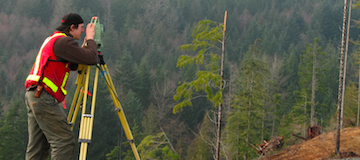
New contract documents will make collaborating with industry stakeholders much easier. The American Institute of Architects has come out with six new forms for use on design-build projects.
C103-2015, C201-2015, C202-2015 Forms
The new C103-2015 form can be used as a standard agreement between consultants and owners. It is best used for jobs without a predefined scope of consultant services. However, it is used to establish the expectations between the two parties. It should contain basic terms in regards to licenses, claims, disputes, copyrights, and termination of services.
In addition to using C103-2015, companies should include the new C202-2015, which is a standard Geotechnical Engineering Services form. This additional paperwork will establish any duties and responsibilities of any geotechnical engineer that has been hired as a consultant.
C201-2015 will also be included with C103-2015 in the event of a land survey. The form details the duties of any surveyor that is acting as a consultant. It should include details such as the type of survey being completed: boundary, ALTA/ACSM, or topographic surveys.
While both C201-2015 and C202-2015 may not be necessary for each project, they are not intended to be used as standalone agreements. They are designed to be used with C103-2015.
Six Other Forms
AIA has released an additional six documents for design-build usage. The popular paperwork packet now includes the change order for a design-build project, G741-2015, and the application and certificate for payment, contractor G742C-2015. Other forms are the certificate for payment application, subcontractor agreement, continuation sheet for a design-build project for both contractor and subcontractor, and change directive, numbered G742S-2015, G743C-2015, G743S-2015, and G745-2015 respectively.
Owners, consultants, and contractors can begin using these forms immediately. They are available through the latest AIA Contract desktop software. Users can also go to the AIA documents on demand or on demand plus to obtain each form individually.
Thanks to Hugo Chilsom on flickr for the image used in this post.





